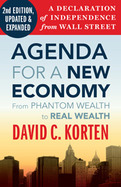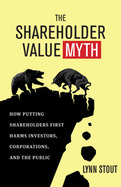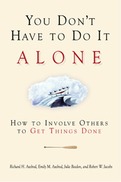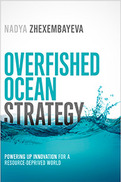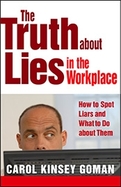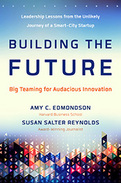In this revised and updated edition David Korten has fleshed out his vision of the alternative to the corporate Wall Street economy: a Main Street economy based on locally owned, community-oriented “living enterprises” whose success is measured as much by their positive impact on people and the environment as by their positive balance sheet. We will lose nothing in the process because, as Korten ably demonstrates, the supposed services Wall Street offers are simply a con game. And Korten now offers more in-depth advice on how to mount a grassroots campaign to bring about an economy based on shared prosperity, ecological stewardship, and citizen democracy.
—Jack Welch
Executives, investors, and the business press routinely chant the mantra that corporations are required to “maximize shareholder value.” In this pathbreaking book, renowned corporate expert Lynn Stout debunks the myth that corporate law mandates shareholder primacy. Stout shows how shareholder value thinking endangers not only investors but the rest of us as well, leading managers to focus myopically on short-term earnings; discouraging investment and innovation; harming employees, customers, and communities; and causing companies to indulge in reckless, sociopathic, and irresponsible behaviors. And she looks at new models of corporate purpose that better serve the needs of investors, corporations, and society.
What kind of involvement is needed?
How do I know who to include?
How do I invite people to become involved?
How do I keep people involved?
How do I finish the job?
The answers to these questions serve as a guide to finding the right people and keeping them energized, enthusiastic, and committed until the work is completed. Real life examples from corporations, government, and nonprofits illustrate the process in action. You'll learn to involve others in a way that will actually make your work easier, resulting in less stress, better ideas, and more successful outcomes.
Overfished Ocean Strategy offers five essential principles for innovating in this new reality. Zhexembayeva shows how businesses can find new opportunities in what were once considered useless by-products, discover resource-conserving efficiencies up and down their value chain, transfer their expertise from physical products to services, and develop ways to rapidly try out and refine these new business models. She fills the book with examples of companies that are already successfully navigating the overfished ocean, from established corporations such as BMW, Microsoft, and Puma to newcomers such as Lush, FLOOW2, and Sourcemap.
The linear, throwaway economy of today—in which we extract resources at one end, create products, and throw them away at the other—is rapidly coming to an end. In every industry, creative minds are learning how to make money by taking this line and turning it into a circle. Nadya Zhexembayeva shows how you can join them and avoid being left high and dry.
It's critical to catch workplace lies before they snowball into something catastrophic, but most of us have no clue about how to spot a liar.
- The first book to address the complexities of lies in the workplace, where deception can destroy relationships, careers, and companies
- Offers dozens of ways to spot liars and tactical advice on how to deal with them
- Written by a leading workplace consultant and body language expert
- Click here for the press release
Lies aren't good in general, but in the workplace they're especially poisonous. They can destroy employee engagement and productivity, undermine teamwork, increase stress, ruin people's livelihoods, and even bring down entire companies.
It's critical to catch workplace lies before they snowball into something catastrophic, but most of us have no clue about how to spot a liar. And the workplace setting adds another layer of complexity. At what point do you report a liar? If you decide to take action, what exactly should you do? And what if the liar is your boss?
In this entertaining and needed book, leading workplace body language expert Carol Kinsey Goman combines her own experiences with the latest research to provide a comprehensive guide to spotting, exposing, and minimizing workplace lies. Goman looks at the high cost of workplace deception for individuals and organizations, why people tell lies at work, and the kinds of lies they tell. She offers fifty ways that body language and vocal cues can help you spot a liar and explains how our own vanities, desires, self-deceptions, and rationalizations allow us to be duped.
Once you spot a lie, she provides tactical advice on how to respond, whether the liar is above, below, or on the same level as you. And Goman explains how to make sure your own body language doesn't inadvertently make you seem untrustworthy and what leaders at all levels can do to reduce lies and encourage candor.
Some workplace lies are a polite and positive part of professional life ("I'd be delighted to come to that meeting"). But Goman focuses on truly destructive lies and shows how you can prevent them from wreaking havoc on individuals and organizations.
2016
Machiavelli famously wrote, “There is nothing more difficult to take in hand, more perilous to conduct, or more uncertain in its success than to take the lead in the introduction of a new order of things.”
That's what this book is about—innovation far more audacious than a new way to find a restaurant or a smart phone you can wear on your wrist. Amy C. Edmondson and Susan Salter Reynolds explore large-scale systemic innovation that calls for “big teaming”: intense collaboration between professions and industries with completely different mindsets. This demands leadership combining an expansive vision with deliberative incremental action—not an easy balance.
To explore the kind of leadership required to build the future we need, Edmondson and Reynolds tell the story of Living PlanIT. This award-winning “smart city” start-up was launched with a breathtakingly ambitious goal: creating a showcase high-tech city from scratch to pilot its software—quite literally setting out to build the future. This meant a joint effort spanning a truly disparate group of software entrepreneurs, real estate developers, city government officials, architects, construction companies, and technology corporations. By taking a close look at the work, norms, and values in each of these professional domains, we gain new insight into why teaming across fields is so challenging. And we get to know Living PlanIT's leaders, following them and their partners through cycles of hope, exhaustion, disillusionment, pragmatism, and renewal. There are powerful lessons here for anyone, in any industry, seeking to drive audacious innovation.


